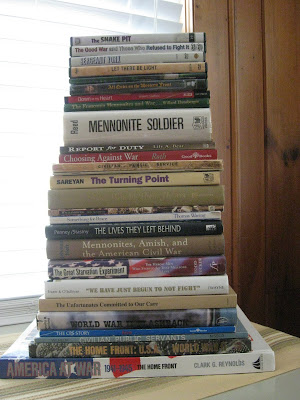My editor is fond of footnotes. So naturally I give them to her. The difficult thing is figuring out when to insert them into my manuscript.
When I begin a new book I devour everything I can on my topic and then eventually, as a plot line emerges, I write my story. At this point I work with the knowledge that I've absorbed during all the research. But I haven't taken a lot of notes. Instead I buy, borrow, and pay overdues on books that I can't seem to live without. I take pictures in archives and I save emails from experts I've interviewed. I want those facts at my fingertips and I know from experience I'll need them later. I slap sticky flags at crucial spots. I underline, circle, and make lots of sloppy melodramatic asterisks beside important info.
I write my story, revise it, tweak it repeatedly, and eventually I think it's ready to send to Carolyn Yoder. And then it hits me - I still have to footnote.
Of course I've tried to document as I go. But the truth is that documenting can seriously interrupt the flow of the story. So mostly I write and worry about footnoting later.
So I'm at that point now with my work-in-progress. The story is written and has been fiddled with and tightened and improved upon in various ways and I believe that I'm within weeks of submitting to my editor. (I thought the same thing back in November before I remembered the footnotes.)
I am, at this moment, in the midst of tedium. Rereading the manuscript, noting which items might raise some question of authenticity in my editor's mind. And pulling down every resource possible to verify the following and then some. (and you can skip over this tiny list if you like!)
- When America entered WWII in December 1941 the draft age was 21
- There was an exemption for conscientious objectors (COs) who, for religious reasons, could not participate in war.
- Civilian Public Service (CPS) provided alternative ways for COs to serve.
- CPSsers mostly lived in former Civilian Conservation Corps barracks and did forestry and conservation work.
- They ate at trestle style picnic tables.
- Some switched into work in mental hospitals which were grossly understaffed.
- Some were guinea pigs in medical experiments
- German neighbors could have been sent away to internment camps
- Eastern State Hospital had a death house and a morgue and conscientious objectors helped with autopsies
- There was an elevator in Sequeyra Building and a laundry chute that made a great sliding board in the turret of Taylor Building
- The College of William and Mary charged 2 cents per day for overdue library books in 1943
- Etcetera
Have I mentioned this is tedious? But honestly, one part of me loves this task. It's so validating. It makes the story feel solid. I have the same excitement bubbling up in me that I felt when I began researching and feeling the story emerge. It's hard to sleep at this stage because I have this sense of something really important happening.
I hope my editor feels it when she reads the manuscript. And I sure hope she eats up those footnotes!


Thanks for sharing this part of the process with us. So much goes into a book before we ever pick it up at the bookstore or order it online!
ReplyDeleteAnd you'll be glad you did it...particularly when the book is published and kids (and teachers!) ask you where you got your information! Good work.
ReplyDeleteI saved this entry into a Word document to refer to later. I challenge you to an entry on ten easy steps to writing a novel. After that, could you tackle discussing the differences in historical fiction and biography?
ReplyDelete